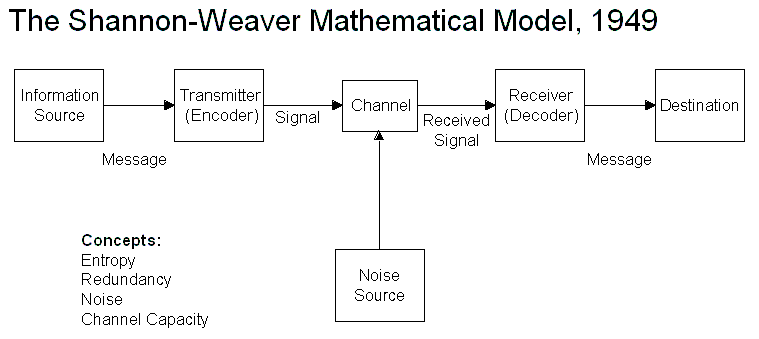Apply the Shannon-Weaver model to an example of communication. Consider the following:
- How widely is this applicable?
- How useful do you find this sort of exercise?
- What are the main communicative functions of redundancy?
- What do we mean by saying the english language is 50% redundant?
I have chosen to use these images from a campaign to promote saving tigers from extinction.
Putting the images through the Shannon Weaver Model
The information source - The information is provided by the problem that tigers are nearly being pushed to extinction and that everyone needs to help - so all audiences need to be reached.
Transmitter - Thought provoking image chosen - from a distance it makes the audience question the image, as it is unusual and quirky, but on closer study there is a serious message. I think that it's the idea that dogs and goats are in their millions in comparison to the tiger.
Channel - Poster format chosen as it best showcases the image with plenty of white space to focus on the image.
Receiver - People using public transport are most likely to see it because it is a poster, and so will be displayed in bus stops and on the subways, for example. I found the poster on the internet, and I think that these are the best sources for reaching a wide, general public audience.
Destination - The response to the poster will be a quick website visit - which is really good for being quick and easy and so well received by the general public.
- Discuss the ways in which convention can be said to facilitate understanding. Think of visual communication that breaks or extends specific conventions. How does this affect the desire to communicate or the audience they reach?
Convention can facilitate understanding in that the thought being provoked by everyday knowledge can bridge the gap to the message being given in the image. This can be stunted when what was thought was common knowledge actually isn't and the reaction provoked was not was the designer was expecting at all.
In the case of the endangered tiger campaign, I think that the dog image is not a good idea for a quick reaction poster because lots of people love their dogs as a beloved pet and wouldn't consider them replaceable- I don't think it would be received well as a concept! A hamster or a fish, maybe?! They are relying on the fact that there are millions of dogs in the world, but to the audience they can consider their current pet irreplaceable and that would shut their attention span to the campaign.
In the case of the endangered tiger campaign, I think that the dog image is not a good idea for a quick reaction poster because lots of people love their dogs as a beloved pet and wouldn't consider them replaceable- I don't think it would be received well as a concept! A hamster or a fish, maybe?! They are relying on the fact that there are millions of dogs in the world, but to the audience they can consider their current pet irreplaceable and that would shut their attention span to the campaign.



No comments:
Post a Comment